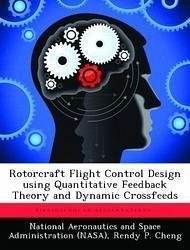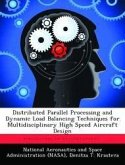A multi-input, multi-output controls design with robust crossfeeds is presented for a rotorcraft in near-hovering flight using quantitative feedback theory (QFT). Decoupling criteria are developed for dynamic crossfeed design and implementation. Frequency dependent performance metrics focusing on piloted flight are developed and tested on 23 flight configurations. The metrics show that the resulting design is superior to alternative control system designs using conventional fixed-gain crossfeeds and to feedback-only designs which rely on high gains to suppress undesired off-axis responses. The use of dynamic, robust crossfeeds prior to the QFT design reduces the magnitude of required feedback gain and results in performance that meets current handling qualities specifications relative to the decoupling of off-axis responses. The combined effect of the QFT feedback design following the implementation of low-order, dynamic crossfeed compensator successfully decouples ten of twelve off-axis channels. For the other two channels it was not possible to find a single, low-order crossfeed that was effective.








